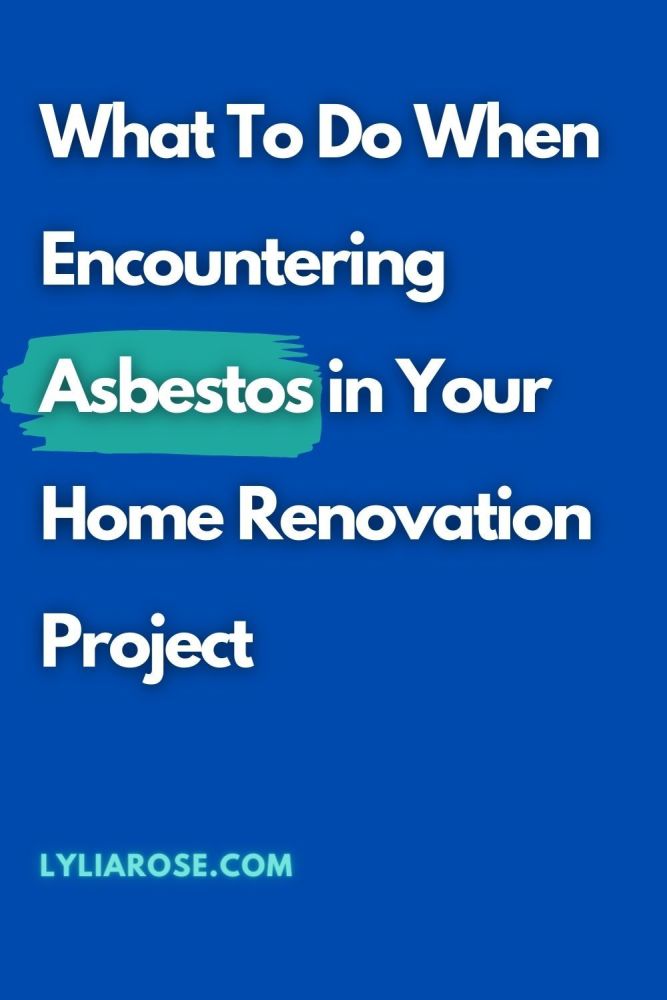What To Do When Encountering Asbestos in Your Home Renovation Project
Posted on
Are you planning a home renovation project? It's an exciting endeavour that can transform your living space. However, amidst the enthusiasm, it's essential to be aware of potential hazards that may be lurking, such as asbestos.
Asbestos, a dangerous fibrous material, can be found in older buildings and poses severe health risks if mishandled.
It is a fact that asbestos-containing materials are responsible for the deaths of 5,000 workers every year!
In this article, we will guide you through the necessary steps to effectively manage asbestos encounters and ensure the safety of everyone involved in your home renovation project.

Understanding the Dangers of Asbestos
Before delving into the specifics of dealing with your home renovation asbestos, it's essential to comprehend the risks associated with this hazardous material. Asbestos fibres, when released into the air and subsequently inhaled, can cause severe respiratory issues, including lung cancer, asbestosis, and mesothelioma. These health conditions often develop over time, making it crucial to prioritise proactive measures when encountering asbestos during renovations. Don’t make the mistake during a home renovation of ignoring something that could be asbestos.
Identifying Asbestos-Containing Materials
To effectively manage asbestos in your home renovation project, you need to identify its presence. While it is challenging to determine asbestos visually, some common building materials that may contain asbestos include insulation, pipe coverings, floor tiles, textured paints, and certain types of adhesives. If you suspect the presence of asbestos in any material, it is best to assume it is present and proceed with caution.
What Does Asbestos Look Like?
Asbestos itself does not have a distinct visual appearance that can be easily identified with the naked eye. It is a fibrous mineral that occurs naturally and can be found in various forms. The appearance of asbestos-containing materials (ACMs) depends on the specific product or material in which it is present. Some common ACMs that may contain asbestos include:
-
Insulation: Asbestos insulation can appear as a fluffy or wool-like material. It was commonly used for thermal insulation in attics, walls, pipes, and boilers.
-
Pipe Coverings: Asbestos pipe coverings were often applied to insulate and protect pipes. They can resemble a plaster-like material or a corrugated cardboard-like covering.
-
Floor Tiles: Asbestos floor tiles were widely used in residential and commercial buildings. They can resemble vinyl or linoleum tiles and may come in various colours and patterns.
-
Textured Paints and Coatings: Asbestos was sometimes added to textured paints, coatings, and spray-on materials used on walls and ceilings. These surfaces may have a popcorn-like or rough texture.
-
Roofing Materials: Asbestos-containing roofing materials, such as shingles or corrugated sheets, can resemble non-asbestos alternatives. It is challenging to identify asbestos in roofing materials without proper testing.
It is important to note that visual inspection alone cannot determine the presence of asbestos. Asbestos fibres are microscopic and cannot be detected without specialised equipment and laboratory analysis. If you suspect the presence of asbestos in your home, it is advisable to consult professionals who can conduct proper testing and asbestos surveys to confirm its presence.
First Action If You Suspect Asbestos
If there is a possible release of asbestos fibres within the work area, you need to stop all work immediately.
The area that you are concerned about home renovation asbestos exposure needs to be sealed off from everybody entering the area. You also need to remove any clothing that shows any dust or debris and place them in a plastic bag. You will also need to inform all parties working on the property of the potential for an asbestos risk.
Second Action
You will need to call in a specialist in asbestos services to come to the property and conduct an asbestos survey and ascertain the level of the issue through sampling and asbestos testing. Ideally, this would have been performed before any construction work was taken up, but in the cases where it has been overlooked or ignored, this is a high priority.
An asbestos removal company is the only certified body to legally work with asbestos-containing materials. You should not perform any sample taking or removal and disposal of suspected asbestos materials if you are not trained to do so.
Engage a Professional Asbestos Survey
When in doubt about the presence of asbestos in your home, it is strongly recommended to hire a professional asbestos surveyor. These experts have the necessary training, experience, and equipment to safely assess the materials in your home and identify any asbestos-containing substances. A comprehensive survey will help you accurately determine the extent of asbestos in your renovation project and develop a suitable plan to address it.
An asbestos survey is the only way to know for certain that the materials you are working around have asbestos traces within them. These specific surveys need to be conducted by an expert in asbestos services to determine the materials type, amount and location before any further work is carried out.
The surveyor will have training and experience in all aspects of asbestos surveying work, knowledge of asbestos-containing products and proper management systems for you to follow to the letter.
Develop an Asbestos Management Plan
Once the presence of asbestos has been confirmed, it is crucial to develop a detailed asbestos management plan. This plan should outline the necessary precautions, procedures, and safety measures to effectively mitigate the risks associated with asbestos exposure. It may involve engaging licensed asbestos removal professionals or using specialised encapsulation techniques to minimise the release of asbestos fibres during the renovation process.
Ensure Proper Safety Precautions
When working on a renovation project involving asbestos-containing materials, prioritising safety is paramount. Ensure that all individuals involved in the project receive appropriate training on asbestos safety and are equipped with the necessary personal protective equipment (PPE). This includes wearing disposable coveralls, gloves, eye protection, and respiratory masks specifically designed for asbestos exposure.
Professional Asbestos Removal or Encapsulation
Depending on the extent and condition of the asbestos materials, you may need to engage professional asbestos removal services. These licensed experts will safely remove and dispose of the asbestos-containing materials in accordance with legal requirements and industry best practices. In some cases, where removal is not feasible or practical, encapsulation techniques can be employed to seal the asbestos materials, minimising the risk of fibre release.
Proper Disposal of Asbestos Materials
Disposing of asbestos materials requires adherence to specific regulations and guidelines to prevent further contamination and ensure the safety of the environment and the community. It is crucial to consult local authorities or waste management agencies to understand the proper disposal procedures and disposal sites designated for asbestos-containing materials.
Regular Monitoring and Follow-Up
Even after completing the renovation project, it is advisable to conduct regular monitoring to ensure that no asbestos fibres were inadvertently released during the process. Additionally, keeping records of any asbestos-related work and maintaining an asbestos management plan will help in future renovations or property transactions, ensuring the safety of all occupants.
Rounding Up
Encountering asbestos during a home renovation project requires immediate attention and careful handling. By understanding the risks associated with asbestos, identifying its presence, engaging professionals for surveys and removal, and implementing proper safety measures, you can effectively mitigate the hazards and protect yourself and others.
Remember to follow disposal regulations, conduct regular monitoring, and maintain comprehensive records for future reference. Prioritising safety throughout the process will provide peace of mind and allow you to achieve your home renovation goals without compromising your well-being.
